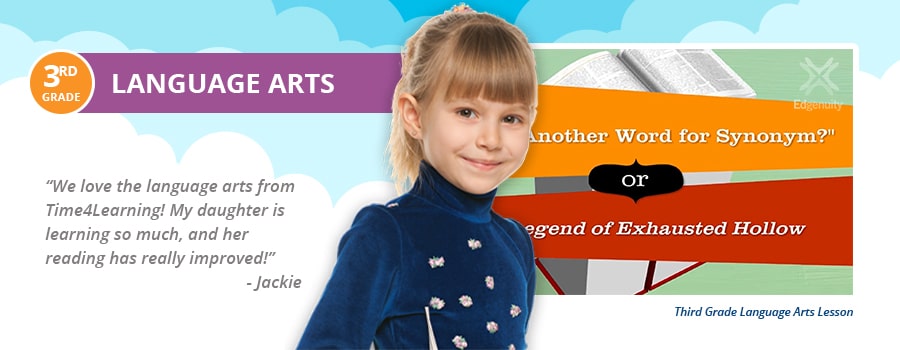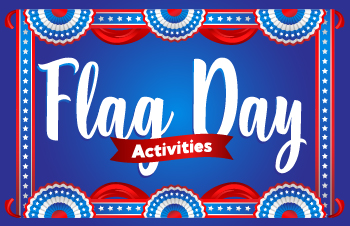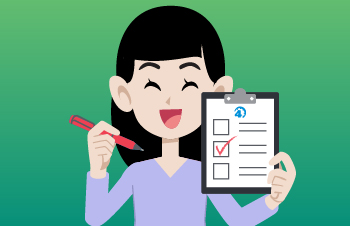Third Grade Homeschool Language Arts Curriculum
A third grade language arts curriculum will build on what students have learned in the last few years. Your child’s grammar, and writing skills are also expected to expand as they write longer copy with more detail and transitions.
This page will give you an overview of the objectives and goals your child’s third grade language arts curriculum should aim to achieve.
Which Language Arts Concepts Should a Third Grader Know?
In third grade, students should be fluent readers who are ready to dive into chapter books and take their reading comprehension skills to the next level. Typically, third grade language arts studies will include:
- Use a number of comprehension strategies to answer questions.
- Compare and contrast information.
- Use transition words when writing.
- Use proper punctuation and capitalization.
- Understand idioms, prefixes, and suffixes in order to expand their vocabulary .
Discover everything that is included in Time4Learning’s third grade language arts lessons below.
Third Grade Reading Goals/Objectives
Now that phonics and reading skills are pretty much mastered, it’s time for your child to focus on their comprehension skills. Using the right strategies to break down text, ask questions, make inferences and summarize are all concepts that students will focus on this year.
The ideal language arts curriculum for third grade will help your child address these and many more objectives, including but not limited to:
- Describe characters, identify the main idea and use supporting details.
- Use context clues to understand what a word means.
- Read and understand a variety of genres such as fiction, non-fiction, poetry, fables, etc.
Learn more about Time4Learning’s reading curriculum and how it helps your child achieve their academic goals.
Third Grade Writing Goals/Objectives
With the basics down, students are now moving on to writing longer, more detailed copy. This year, students will continue to grow their vocabulary and use these new words and phrases to make their writing as clear and concise as possible. A thorough third grade language arts curriculum will also help students with the writing objectives listed below.
- The writing process: planning, drafting, revising, editing, publishing
- Write longer text in chronological order using transition words
- Write different types of text: opinion, informative, narrative, etc.
Third Grade Grammar Goals/Objectives
Good writing isn’t possible without a solid understanding of grammar rules. This year, students will gain a deeper understanding of concepts that will help them communicate more effectively, both in writing and orally. Your language arts curriculum for third grade should teach your child how to:
- Use proper punctuation, capitalization, and noun and verb forms (singular/plural)
- Understand parts of speech, prefixes, suffixes, homophones, etc.
- Know the different sentence types
Learn more about the importance of grammar and the grammar skills your child will learn throughout the years with an effective homeschool grammar curriculum.
Time4Learning’s Third Grade Language Arts Lessons
The student will demonstrate knowledge by determining the meaning of synonyms from grade level appropriate vocabulary, by correctly choosing a given word or phrase that means the same thing, in reading.
The student will demonstrate knowledge by determining the meaning of antonyms from grade level appropriate vocabulary, by correctly choosing a given word or phrase that means the opposite, in reading.
The student will be able to analyze and determine the correct meaning of a word, based on the prefix of the root word or how the prefix is used in the context of a passage.
The student will be able to analyze and determine the correct meaning of a word, based on the suffix of the root word or how the suffix is used in the context of a passage.
The student will be able to identify and select the appropriate homophone or word that sounds the same, based on the context of a passage which fits the best meaning of the given word or phrase.
The student will be able to identify and analyze the author’s use of idioms, based on the context of a passage and how these expressions are used in literal and interpretative information.
Use the reading comprehension process skills of summarizing, predicting, visualizing, questioning, and clarifying with extensive scaffolding and support, through think aloud prompts.
Use the reading comprehension process skills of summarizing, predicting, visualizing, questioning, and clarifying with scaffolding and support, through think aloud prompts.
Use the reading comprehension process skills of summarizing, predicting, visualizing, questioning, and clarifying to independently read and comprehend texts with minimal think aloud support.
Use knowledge, information, and ideas from literary or expository texts to make inferences about the text (e.g., make inferences, draw conclusions, make generalizations, and infer sequence of events.
Identify the main idea(s) or theme(s), distinguishing them/it from supporting details in a literary text.
Develop summaries or paraphrase information from literary or expository text containing context clues.
Identify characters and compare and contrast characters within a literary text.
Identify and describe the setting(s) in a literary text
Identify plot by using story elements including the main problem and solution.
Identify the main idea(s) using the supporting details in an expository text.
Students will be introduced to variations in language, specifically how common phrases like “spilled the beans” can have nonliteral meanings.
Students will understand some variations in language, specifically how common phrases like “penny pincher” can have nonliteral meanings, and that digital texts have specific features, like hyperlinks.
Students will be introduced to the concepts of shades of meaning, point of view, and context clues. They will apply these skills when reading two authentic nonfiction texts, “Homesick” and “Wall of Wonder”.
Students will review shades of meaning, point of view, and context clues. They will apply these skills when reading an authentic nonfiction text, “Cats versus Dogs: Who makes a better friend?”
Students will review shades of meaning, point of view, and context clues. They will apply these skills when reading an authentic nonfiction text, “Food Fight.”
Identify and use knowledge of the author’s purpose to comprehend the writing of a literary or expository text.
Read and interpret charts and graphs.
Compare and contrast characters, settings, ideas, information and/or plot within a text or between two or more genre sources (literary or expository) that include figurative language such as similes.
Students will be introduced to scientific vocabulary and high utility academic words. Main idea and details will be reviewed before students compare and contrast these elements in two nonfiction texts.
Students will be introduced to scientific vocabulary and high utility academic words. Main idea and details will be reviewed before students compare and contrast these elements in two nonfiction texts.
Students will be introduced to scientific concepts, high utility academic words, and root words. Students will compare and contrast the main ideas and details in two nonfiction texts about ice.
Identify literary or expository text that is organized in sequential/chronological order using words (first, next, last, then, finally, etc.) or phrases (to begin with, in addition to, etc.).
Distinguish between fact and opinion in an expository text.
Identify and distinguish between cause and effect in expository and literary texts.
Students will demonstrate knowledge of comprehension skills on grade level appropriate literary and expository passages, with questions that simulate a high-stakes assessment.
The student will learn thematic content through discovery, and achieve comprehension by reading literature with emphasis on vocabulary. Authentic fiction literature is included.
Through a series of learning activities focused on discovery, recognition, and application, the student will practice language arts skills.
The student will learn thematic content through discovery, and achieve comprehension by reading literature with emphasis on vocabulary.
Through a series of learning activities focused on discovery, recognition, and application, the student will practice language arts skills.
The student will learn thematic content through discovery, and achieve comprehension by reading literature with emphasis on vocabulary.
Through a series of learning activities focused on discovery, recognition, and application, the student will practice language arts skills.
The student will learn thematic content through discovery, and achieve comprehension by reading literature with emphasis on vocabulary.
Through a series of learning activities focused on discovery, recognition, and application, the student will practice language arts skills.
The student will learn thematic content through discovery, and achieve comprehension by reading literature with emphasis on vocabulary.
Through a series of learning activities focused on discovery, recognition, and application, the student will practice language arts skills.
The student will learn thematic content through discovery and achieve comprehension by reading literature with emphasis on vocabulary. Authentic Caldecott-winning fictional literature is included.
Through a series of learning activities focused on discovery, recognition, and application, the student will practice language arts skills.
The student will learn thematic content through discovery and achieve comprehension by reading literature with emphasis on vocabulary. Authentic fiction literature is included.
Through a series of learning activities focused on discovery, recognition, and application, the student will practice language arts skills.
Scope & Sequence Copyright. © 2025 Edgenuity, Inc. All rights reserved.
Why Choose Time4Learning Third Grade Language Arts Homeschool Curriculum
As your child progresses through the elementary school years, it is important to foster a love of learning while ensuring mastery of important language arts skills such as proper punctuation, grammar and more.
Time4Learning offers a comprehensive online curriculum for third grade homeschoolers and afterschool skill builders. Our program builds on prior knowledge and expands on to new concepts when the student is ready. This feature is especially important in language arts as students often read and gain reading comprehension skills at different speeds. The lessons are interactive and include printable worksheets to keep your child engaged with what they are learning.
Learn more about our online third grade homeschool curriculum, designed to help your child learn and master their fundamental concepts.






